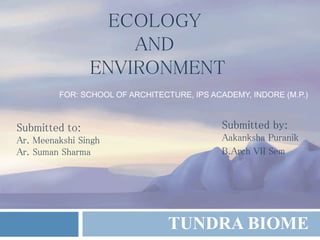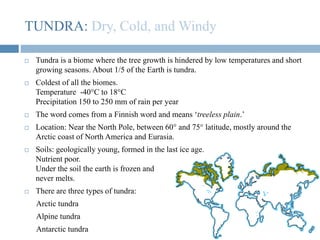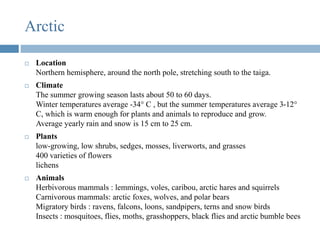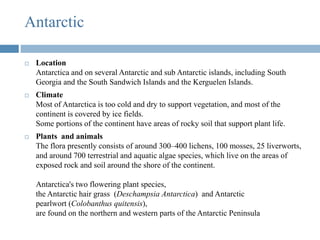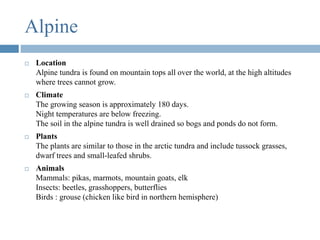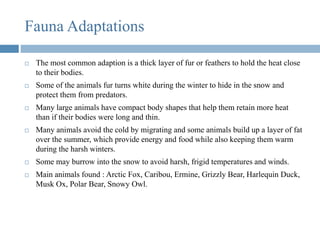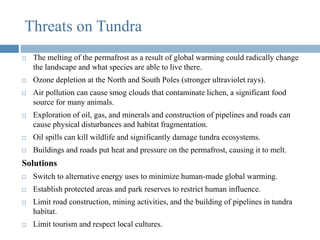The tundra biome is a cold, windy region where tree growth is limited by low temperatures and short growing seasons. It is located near the Arctic and Antarctic circles, and on high altitude mountains worldwide. Plants and animals in the tundra have adaptations like thick fur, camouflage coloring, and compact bodies to withstand the harsh climate. The food web is delicate, with humans as top predators who can disrupt the balance by overhunting. The tundra ecosystem now faces threats from climate change like melting permafrost and pollution.
